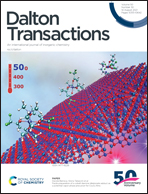Trends in computational molecular catalyst design
Abstract
Computational methods have emerged as a powerful tool to augment traditional experimental molecular catalyst design by providing useful predictions of catalyst performance and decreasing the time needed for catalyst screening. In this perspective, we discuss three approaches for computational molecular catalyst design: (i) the reaction mechanism-based approach that calculates all relevant elementary steps, finds the rate and selectivity determining steps, and ultimately makes predictions on catalyst performance based on kinetic analysis, (ii) the descriptor-based approach where physical/chemical considerations are used to find molecular properties as predictors of catalyst performance, and (iii) the data-driven approach where statistical analysis as well as machine learning (ML) methods are used to obtain relationships between available data/features and catalyst performance. Following an introduction to these approaches, we cover their strengths and weaknesses and highlight some recent key applications. Furthermore, we present an outlook on how the currently applied approaches may evolve in the near future by addressing how recent developments in building automated computational workflows and implementing advanced ML models hold promise for reducing human workload, eliminating human bias, and speeding up computational catalyst design at the same time. Finally, we provide our viewpoint on how some of the challenges associated with the up-and-coming approaches driven by automation and ML may be resolved.

- This article is part of the themed collection: 2021 Frontier and Perspective articles


 Please wait while we load your content...
Please wait while we load your content...